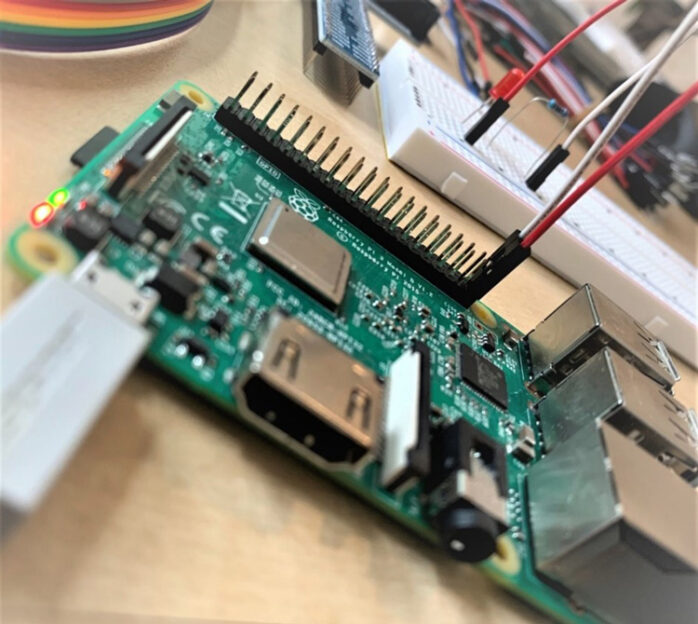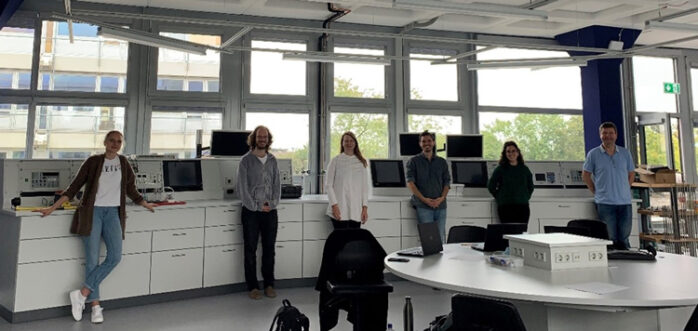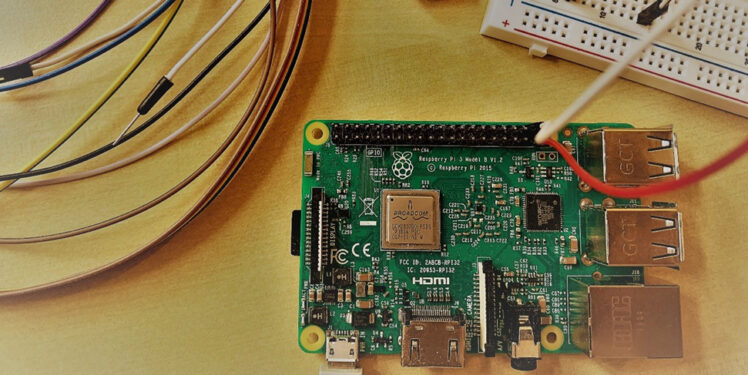Author: Niklas Jöres
This summer, the Application Center for the Integration of Local Energy Systems (ILES) ran a one-week summer school in cooperation with Hamburg University of Applied Sciences (HAW) offering students the opportunity to learn how electrolyzers and wind turbines can be modeled and simulated on the basis of projects in the university’s laboratory.
ILES: Research for the energy transition
The Application Center for the Integration of Local Energy Systems ILES at the Fraunhofer IWES opened its doors more than a year ago. In close cooperation with the HAW, we are currently performing research into a wide range of topics for a successful transition to a sustainable energy system. In particular, we are focusing on optimizing operation for a stable and secure energy system. To do so, we require a sound understanding of the system itself and detailed models of the generator and consumer units. The production of green hydrogen with energy from wind turbines plays a particularly important role for Fraunhofer IWES. In addition, the IWES is also involved in a cross-state joint project performing research into the cross-sector coupling of different generator and consumer units: the North German Real Laboratory (NRL) (a follow-up project to NEW 4.0).
The energy sector of tomorrow
In order to prepare the next generation of engineers and scientists from the Renewable Energy Systems master’s program for their future careers, we took them out of the auditorium and into the laboratory. At the ILES, the students had the opportunity to go beyond theory and discover how to simulate the coupling of wind turbines and electrolyzers on the basis of projects. First, we delved further into the modeling of wind turbines and electrolyzers. Then, the students posed specific questions during the subsequent implementation of the models using MATLAB/Simulink software: How does pitch control work in a wind turbine? How do I set the time step for the simulation in a meaningful way? How do I model the overvoltages in an electrolyzer? – Important questions that we answered using application-oriented examples. The coupling of the models was another aim. For this, the students had to design a controller that sets the current for the electrolyzer based on the power output of the turbine.
Future energy systems will require not only expertise in energy technology, but also IT skills in particular. Therefore, as an additional task, the wind turbine and electrolyzer each had to be simulated separately, for example on a Raspberry Pi. These credit card-sized computers are often employed in teaching as they are inexpensive and there is a wide range of open source software available for them. Furthermore, they offer the possibility of easy integration of additional electronic components such as sensors and actuators with the help of GPIOs (general-purpose input/output). The use of the GPIOs also allowed the students to visualize the signals on an oscilloscope. The students enabled communication between the small computers using the TCP/IP (Transmission Control Protocol/Internet Protocol) communication protocol – a protocol widely employed for data exchange in WLAN networks.

It’s all about technical expertise and teamwork
We want to give students technical expertise of applied research at Fraunhofer IWES, but also to enable personal development through work in our team. Teamwork is something that is particularly important to us here at the IWES, so we were delighted that we were already working together productively after just a short time and to see the students becoming more independent every day.
Our first summer school was a complete success, and we are looking forward to many more exciting events with interested students in the semesters to come.

Further information can be found here:
Test Field for Electrolyzers and Hybrid Power Plants (fraunhofer.de)
Fraunhofer IWES: Thinking of wind energy and hydrogen together
ILES-Summer school

